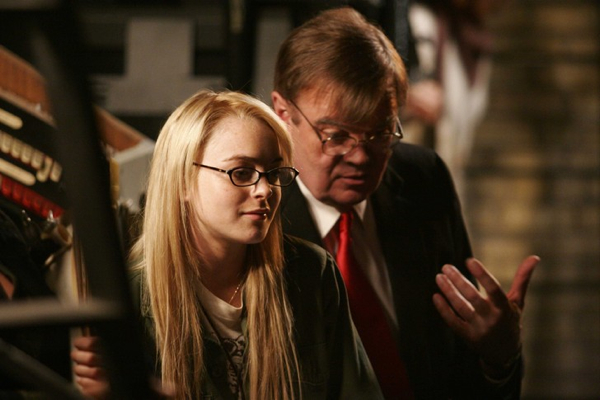Movie review by Greg Carlson
A pleasant, amiable assemblage of many of the best things about Garrison Keillor’s long-running radio series, “A Prairie Home Companion” is almost certain to do better than average business in Upper Midwestern markets. Under the direction of the legendary Robert Altman, the movie version of the show glides back and forth between sparkling songs and the backstage antics that are just as interesting. Framing the story around a fictionalized final performance, the majority of the action unfolds in close-to-real time at the Fitzgerald Theater in St. Paul, Minnesota. Keillor’s screenplay incorporates several of his memorable creations, and it is great fun to watch well-known film stars freshen up familiar characters like investigator Guy Noir and cowpokes Dusty and Lefty.
While both Altman and Keillor have previously been accused of withering condescension toward both performers and audience members, “A Prairie Home Companion” displays very little acid. Surprisingly, the egocentric Keillor seems reasonably happy to share the movie with the other players, hovering over the proceedings like an absent-minded grandfather lost in reverie. Altman and Keillor lavish a great deal of attention on the Johnson Sisters, Rhonda and Yolanda (Lily Tomlin and Meryl Streep), who spend most of their time bantering about days gone by, much to the chagrin of Yolanda’s teenage daughter Lola (Lindsay Lohan), who prefers to pen suicidal poetry.
Between the musical numbers, “A Prairie Home Companion” breezily details several threads, practically all of which ring with a wistfulness that alludes to the brevity and frailty of life. Credited as the Dangerous Woman, Virginia Madsen literally embodies an ethereal angel whose presence is a constant reminder that the last curtain could fall at any time. Keillor shares a terrific sequence with Madsen, deconstructing the penguin gag that has become a classic since it was first related during one of the real-life “Companion’s” annual joke shows. Keillor’s explanation – or non-explanation – of the penguin story offers a delicious taste of the absurdity with which GK approaches his livelihood.
Altman, who spoke about his lifesaving heart transplant surgery at the Academy Awards, is now in his 80s, and he clearly relishes the opportunity to bring life to Keillor’s doom-filled scenario. Both humor and sadness attend Keillor’s refusal to deliver any eulogies – for the show or for human beings, and Altman crafts a visually appropriate accompaniment to Keillor’s stoic acceptance of the inevitable. Along with directory of photography Ed Lachman, Altman’s rich compositions invite the viewer to be a part of the ensemble.
Many of Keillor’s regular “Prairie” contributors appear in the film, including Tom Keith, Tim Russell, Sue Scott, Robin and Linda Williams, and the Guys All-Star Shoe Band, among others. The supporting cast, which includes Kevin Kline as Guy Noir, Maya Rudolph as assistant stage manager Molly, and Woody Harrelson and John C. Reilly as Dusty and Lefty, blends together smoothly. Kline and Rudolph play out a hilarious telephone bit that effortlessly balances physical and verbal humor. Altman often cuts away from the musical performances to focus on something taking place backstage, so fans should be made aware that a limited edition version of the soundtrack CD comes with a DVD containing complete versions of several wonderful tunes.
